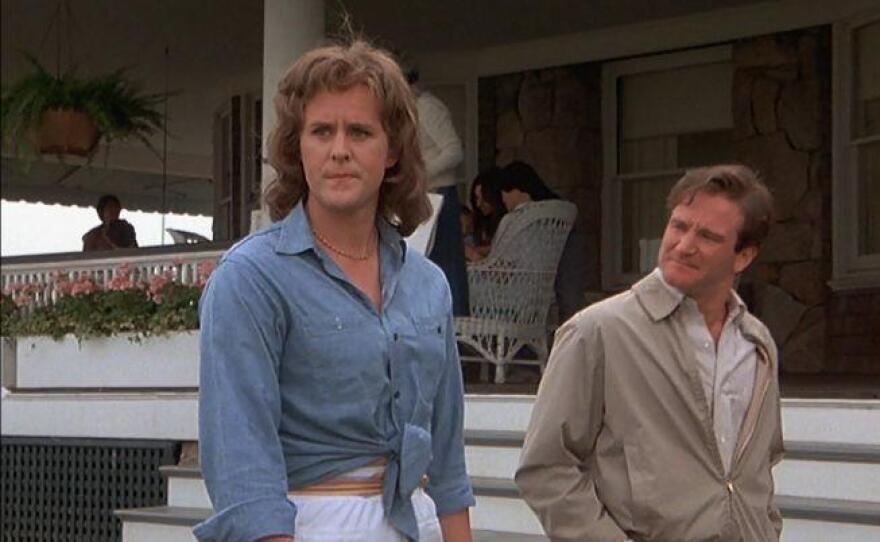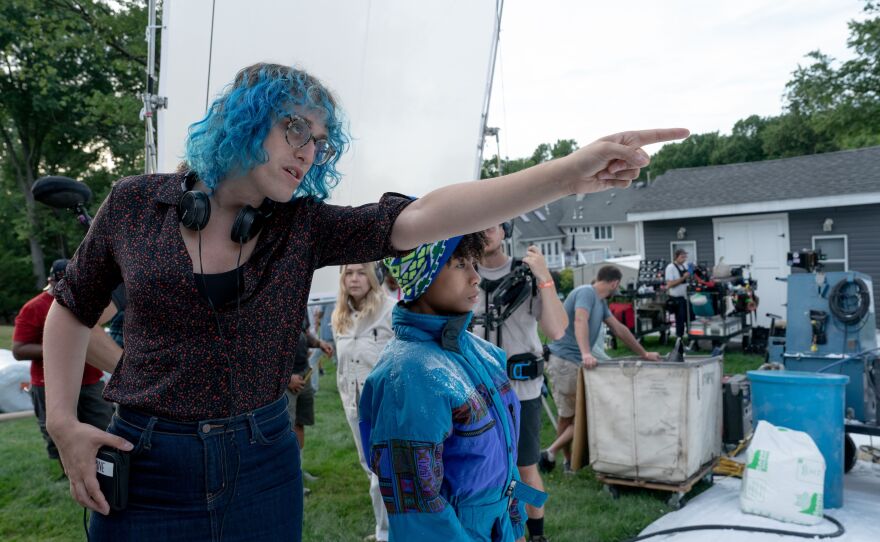Once again Yazdi Pithavala of Moviewallas podcast weighs in on Midday Movies, this time to share his thoughts about movies to watch during Transgender History Month.
Beth's Picks
"Priscilla, Queen of the Desert" (1994, Australia)
"Chasing Chasing Amy" (2023, USA)
"I Saw the TV Glow" (2024, USA)
Yazdi's Picks
"A Fantastic Woman (2017, Chile)
"Joyland" (2022, Pakistan)
"Transition" (2024, USA)
Representation for marginalized or under-represented communities is always a journey when you are looking at films, especially mainstream American movies. So in honor of San Diego designating August Transgender History Month, here are some films that ever so briefly offer a window on trans representation in movies. There are dozens of additional noteworthy and great films out there to discover so this is just a quick sampler to inspire some viewing.
Early representation
I want to reference a couple of early films because it is important to see where transgender representation began on film. This is vital for both context and to see how far we have come … and how far we still need to go.
Ed Wood’s "Glen or Glenda" in 1953 is probably the first U.S. film to depict a trans character. Although Wood tried to make it a sympathetic portrait, he used language that is offensive and hurtful today. Similarly, the 1970 film "The Christine Jorgensen Story," which tells the real-life gender-affirming surgery of of the title character, is clumsy and awkward in tacking its subject. But it is the ad campaign that is most offensive in terms of its sensational and exploitative language regarding transitioning.

Forward progress
But two films that start to mark a move toward positive representation in American movies are the 1982 film 'The World According to Garp,' in which John Lithgow plays a trans woman who is possibly the most sane and positive character in an otherwise crazy universe of people, and then Terence Stamp as Bernadette, an aging trans woman in Australia's "Priscilla, Queen of the Desert" (1994).
In this scene, Stamp's Bernadette delivers a scathingly funny take down of someone who wants to refuse service to people like Bernadette and her friends. One of the positive aspects of the character is her refusal to be the victim and insistence on having agency in her life.
Trans actors have been vocal about having trans actors playing trans roles, and rightfully so. But back in the 1990s, Stamp was stunning as Bernadette. Although Stamp is not a trans performer his tender, funny, and compassionate performance was a rare positive portrait of a trans character. I look at these two films as one step forward-two steps back progress.
Transgender voices on screen
Twelve-year-old Sav Rodgers watched Kevin Smith’s 1997 film "Chasing Amy" and fell in love with it because it offered comfort to a queer kid who did not know there were any other gay films to see. So he wanted to make a sort of fan documentary exploring his love for Smith’s film and its representation of LGBTQ+ characters.
It begins with Rodgers’ fandom for Smith’s film, then develops into a thoughtful exploration of gender and why many in the LGBTQ+ community don’t like the film, and ultimately it is a very personal and sweet coming-of-age story for Rodgers who transitions during the course of the film, coming to terms with his queerness. I love it for being sincere, intimate and sweet but also willing to consider painful questions and be brutally honest. It’s an up close look at one person’s coming-of-age story that will hopefully audiences more accepting of those who chose to transition.
"I Saw the TV Glow," much like "The Matrix" (which was made by the Wachowski Brothers, who both transitioned) can be watched with or without a trans lens. But if you do watch both as trans allegories, they are richer and bolder experiences.

In "I Saw the TV Glow, "Owen and Maddy are teenagers who bond over their obsession with a TV show called "The Pink Opaque." Superficially, the film seems to be a typical tale of angsty teens struggling to fit in and figure out who they are. But the film develops a surreal visual style that is equal parts seductive and ominous. Writer-director Jane Schoenbrun made the film just after they decided to come out as trans. At one point, Schoenbrun employs imagery of being buried alive, a horror trope that taps into a fear everyone can identify with. But here it is not just the fear of physically being buried alive, it is also the fear of burying a version of oneself, of repressing one's true self.
"I Saw the TV Glow" ends on a heartbreaking note. Although you can read the film as one character embracing their true self while the other represses it — so not entirely tragic. But there are scenes here that will break your heart. Overall, the film reflects an exciting step forward for trans artists being able to tell their own stories in ways that feel fresh, honest and authentic.
Quick addition: “Casa Susana” (2022) is available on the KPBS app. There have been a number of documentaries focusing on the trans community (see Yazdi's pick of Transition") but “Casa Susana” provides some context and insight into what life was like in the 1950s and ’60s for a trans or cross-dressing person in the U.S. The documentary focuses on transgender women and cross-dressing men who found a safe place to express themselves at a house in the Catskills known as Casa Susanna. Director Sébastien Lifshitz turns to people who actually visited the house to share their memories. The film offers a reminder of how society can persecute people and force them to live in the shadows for not fitting into a narrow notion of "normal." As with the other films on this list, the underlying message is for greater compassion, tolerance and understanding of how diverse humanity is.






